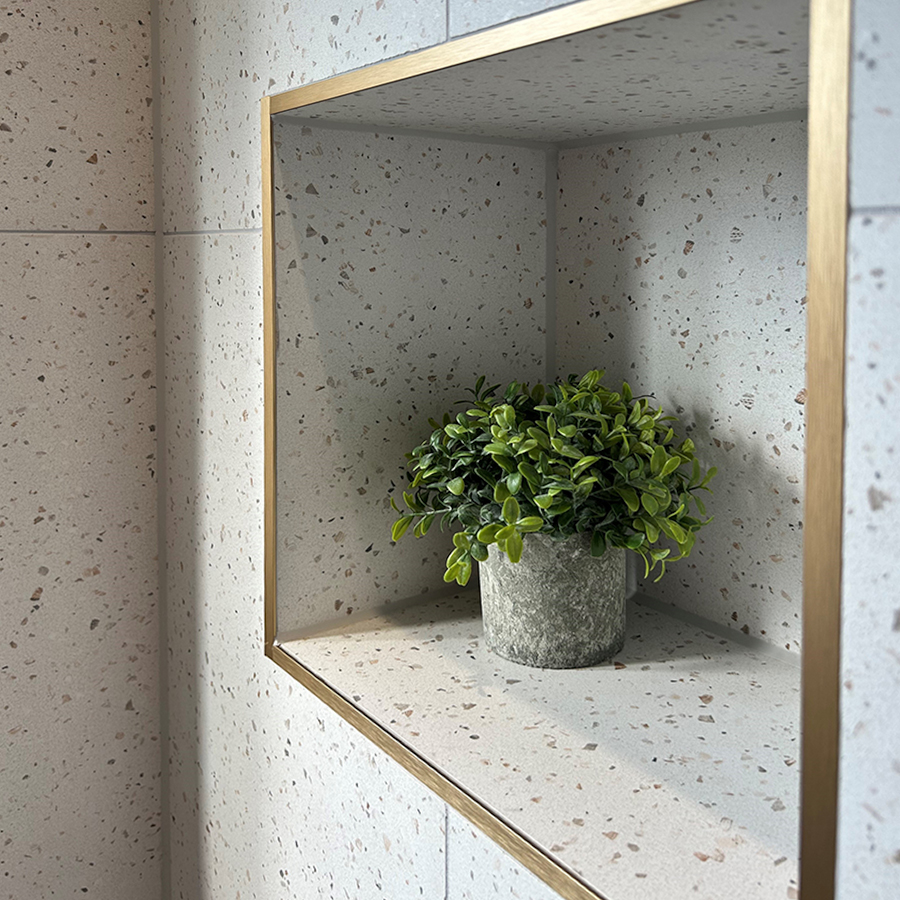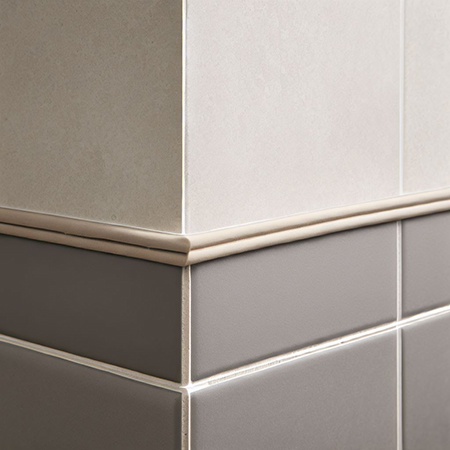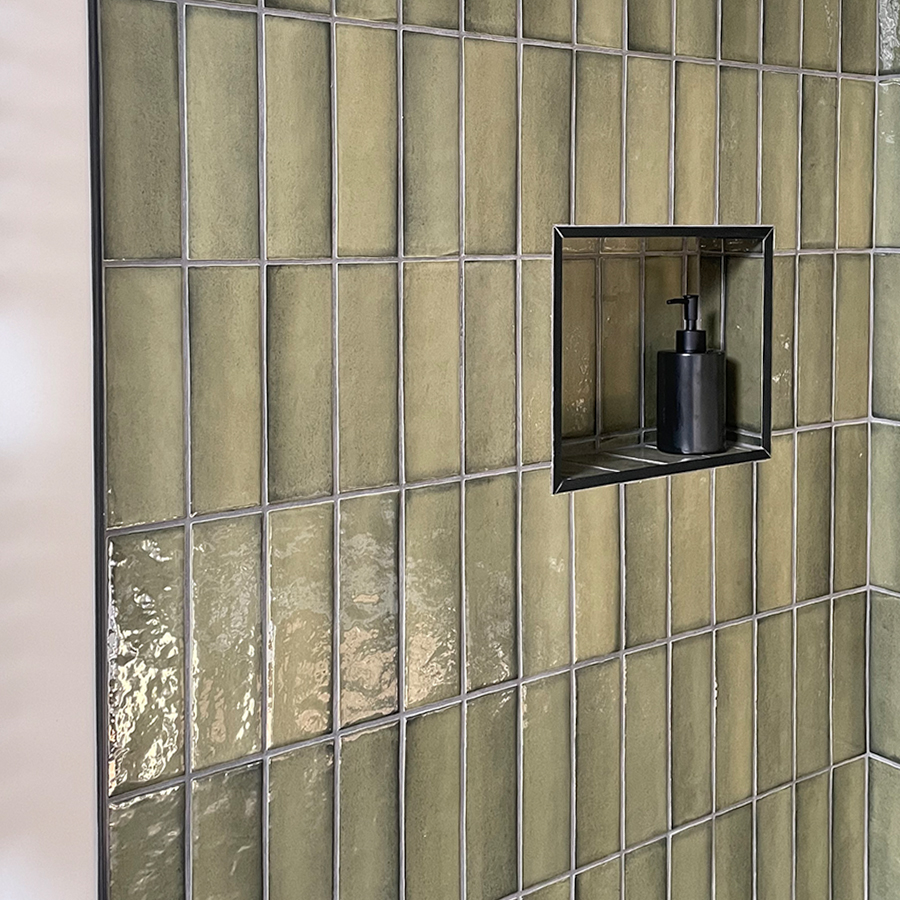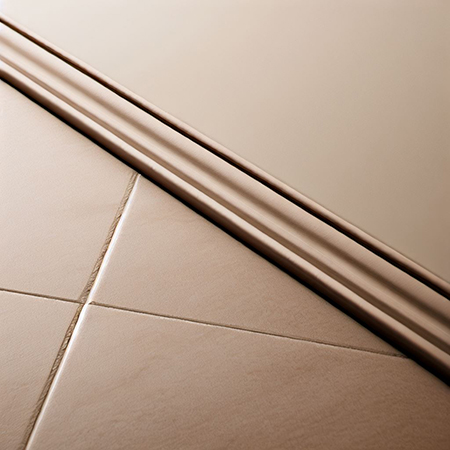Each tile installation is different, so the need for tile trims is different too. The practicalities of the room, coupled with its aesthetic and design, tend to dictate if tile trims are utilised for any particular project, whether you’re fixing natural stone tiles in a kitchen or rectified porcelain tiles on bathroom walls and floors.
What are tile trims?
For anyone asking themselves 'should I use tile trim', the short answer is definitely yes! Tile trims are put in place to protect any exposed edges of a tiled area. This helps to make your tiling look neater and more professional while also preventing any damage. Not only that, but they're also often used for safety, as they cover any sharp edges that may be a hazard and cause injury.

What are the different types of tile trims?
There are a few things to consider when choosing between the various types of tile trim, including making sure that the colour and material match the tile. The four maintypes of tile trim are:
- Plastic trim
- Metal trim
- Stone trim
- Ceramic/porcelain trim
When it comes to tile trim finishes, there are even more options available and these can vary depending on what style works best or if they’ve been designed with a specific purpose in mind.

What size tile trim do I need?
To determine what size tile trim you need, you’ll first need to measure the depth of your tiles. It’s then typically advised that you size up your trim, to leave space for the adhesive to fill (to keep the tile secure). So, for instance, if your tile’s depth is 10mm, you should opt for a 12.5mm trim.
How to install tile edge trim on walls
Once you know what size tile trim you need, you might find that you need to cut or bend the length in order to fit your tile trims properly.
Cutting: cutting requires tools such as a hacksaw, which you’ll use to make cuts in the corners at a 45-degree angle. However, in some cases, this can leave sharper edges on metal trim.
Bending: bending means first cutting to size then using tin snips to create a V-shaped cut at two opposite 45-degree angles. You’ll then bend the trim around your tile edge.
To start installing, mix your tile adhesive and apply as normal, including the parts where the trim will go. Then press your chosen trim into the adhesive so that it’s firmly in place and start laying your tiles. If you’re installing tile trim somewhere like a shower where it might get wet, you may need to leave a small 2mm gap between the trim and tile edge. This should be grouted to avoid water penetration. If using this type of trim, ensure there is a gap between the two surfaces to allow the trim to be added in place.

Benefits of installing tile trims
There are a number of decorative and practical reasons why you might want to consider installing tile trims in your home, including:
- Aesthetic: a tile trim can add the finishing touches to a room to make it look more professional. They can also be used to seamlessly connect different spaces within your home, whether that’s indoors or outside.
- Durability: tile trims are designed to protect any exposed tile edges that may have otherwise been damaged.
- Safety: tile trims allow you to cover any sharp tiles edges that could harm somebody.
- Value: installing tile trims can be relatively cost-effective and an easy DIY project to complete yourself.
How to use tile trim in different spaces
Depending on which room in your house you’re tiling, you might want to consider using trims. In fact, having tiles without trim is really only suitable If there’s no risk of damage to the tiles or any sharp edges that could catch.
Tile trims in the bathroom
In bathrooms, the most common place to use tile trims is around the windows. If natural stone tiles are used, and cuts are neat, then you may not need to use a trim, as thetile colour is the same all the way through. However, modern porcelain tiles with a digitally printed surface will be clay colour on exposed edges, so a plastic or metal trim should be used.

Mimica Onyx Naturale Porcelain
Tile trims in the kitchen
You’ll likely enter your kitchen from the hallway and may even have a dining room or conservatory leading off it or in some cases an external doorway to an external patio area or garden.
One key situation where you would want to use a doorway trim in the kitchen is when the difference in height between the tile and adjoined flooring is so great it becomes a trip hazard. A metal or wood effect trim will cover both the tile and adjoining surface, to considerably reduce the chances of tripping.
Tile trims and floor tiling
When floor tiling, your biggest decision will likely be whether to trim your doorways or not. If the flooring in adjacent rooms is level, you may want to use a tile trim, especially if the tile in the doorway has a cut edge. The reason being that a factory-cut edge is likely to be smooth enough to not pose an issue, but an installer-cut edge will be sharp and could cause a nasty cut to bare feet.
Generally, the only time doorway trim isn’t required is when adjoining rooms are both tiled, in which case a neat grout line will do the trick.

Tile trims and outdoor spaces
If you’ve created an outdoor space using porcelain paving, you may encounter sharp edges - especially if the tiles have been rectified.
While often used inside, there are stainless steel tile trims specifically designed for outdoor use. Not only is this a cost-effective option, but using tile trims outside also offers a more polished look, reduce damage to the tiles, and limit the risk of injury or tripping.
Hopefully, you now know more about using tile trims in your home, and why you might want to avoid tiles without trim. For a professional finish, it’s essential to not only choose the right trim and tile fixing products but also ensure your area is properly prepped by priming before tiling to help create a stable base that will give you clean edges and a lasting, hard-working surface.
And don’t forget, you can always reach out to our team for more advice on your next or current tiling project. Alternatively, our tile installation guides cover a range of topics that will help you with any DIY project.

